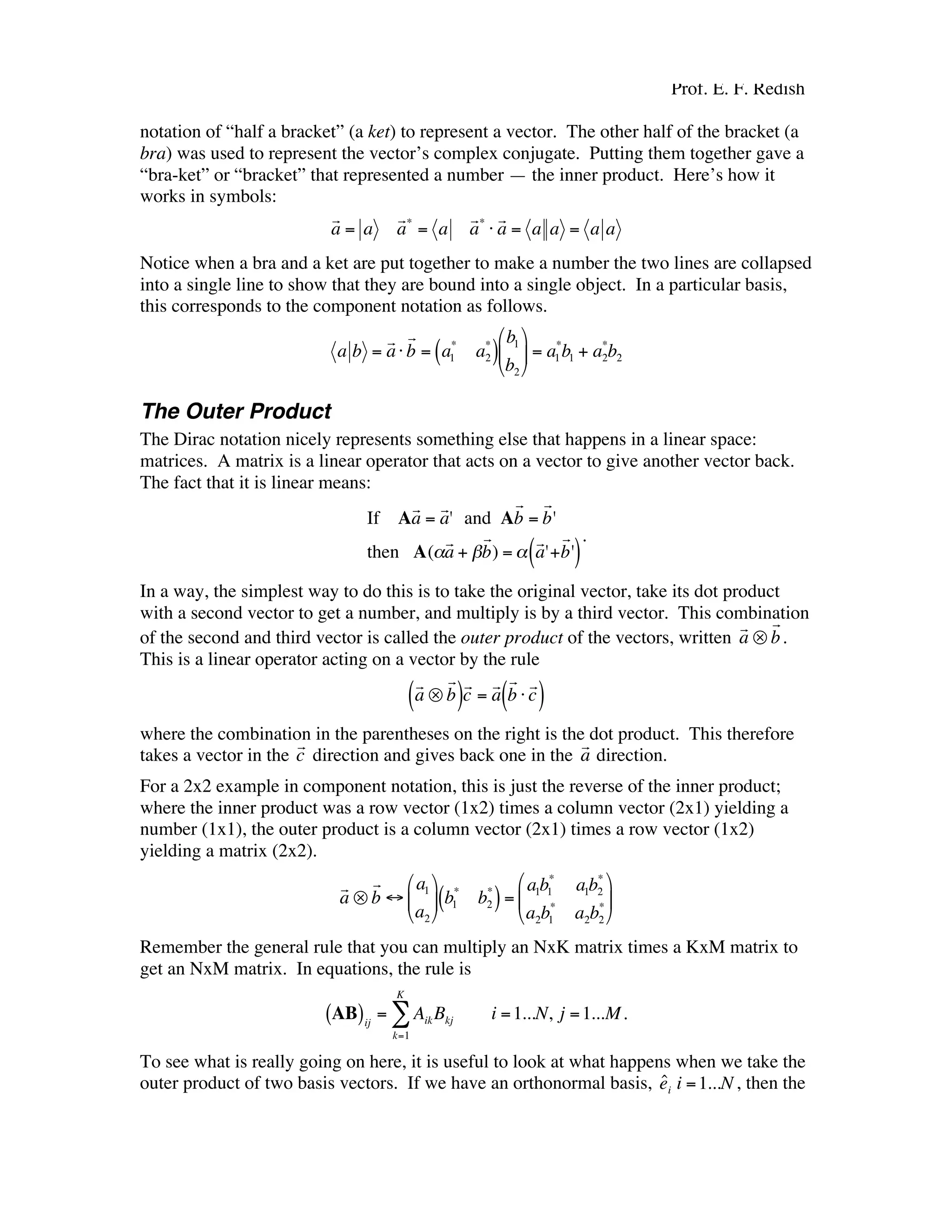This document introduces Dirac notation, which provides a concise way to represent states in a linear space without specifying a coordinate system. It summarizes:
1) Dirac notation uses "kets" to represent vectors and "bras" to represent their complex conjugates. Combining a bra and ket represents an inner product.
2) The outer product of two vectors represents a linear operator. In Dirac notation, a ket-bra combination represents an outer product, while a bra-ket combination represents an inner product.
3) Dirac notation allows representations of states, operators, and transformations between bases to be written independently of any particular coordinate system.



